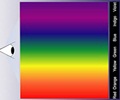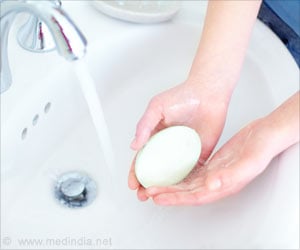Color-additive wipes improve hospital room cleanliness by 69.2% and reduce cleaning time. Learn about the impact of healthcare-associated infections.

With the Use of Visual Cues, Hospital Rooms Get Nearly 70% Cleaner
Go to source).
Patients are nearly six times more likely to get an infection if they use a bed that was previously occupied by someone with the same infection. Despite efforts to keep rooms clean, many hospitals still don’t meet the necessary standards to prevent these infections.
‘Color additive wipes were far more effective than standard wipes, reducing germs by 48% and leaving rooms 69.2% cleaner. #patient_safety #hospitals #HAI #medindia’





Advertisement
Standard vs. Color Additive Wipes
Clinicians tested the outcomes of hospital room sanitation performed in two ways. First, they evaluated the status quo for one week: environmental services (EVS) teams used regular disinfectant wipes to clean surfaces in 10 randomly selected rooms.They then educated the EVS teams about using wipes with a color additive, which shows up on surfaces as blue during cleaning but fades to clear several minutes later when force and friction are used.
This creates a strong visual cue to help users see what has been cleaned with effective techniques and what has not. Finally, the EVS teams cleaned another 10 randomly chosen rooms for a week using the wipes with the color additive.
For both cleaning periods, non-EVS personnel sampled 10 frequently touched surfaces for the presence of microbes before and after rooms were sanitized. Such surfaces included sink handles, bedrails, call remotes, light switches, phones, and toilet seats, among others. In addition, non-EVS staff members monitored room turnover time to determine whether the color additive had any role in the length of the cleaning process.
Advertisement
Color Additive Wipes Reduce Germs by 48% and Save Time
Results demonstrated the effectiveness of using the color additive. In both weeks of the study, 92% of surfaces sampled before cleaning were positive for microbial colonies. After disinfection, rooms cleaned with standard wipes still had microbes present on 60% of surfaces sampled, while rooms cleaned using the color additive saw the microbial presence reduced to 31% of surfaces, a 48% improvement.A deeper analysis of the microbes that remained after cleaning showed that the use of the color additive left rooms 69.2% cleaner than the standard wipes. In addition, the additive slightly reduced the cleaning time needed, from 39.1 minutes to 36.8 minutes.
Color Additive Wipes Improve Cleanliness and Efficiency
“Our study is the first to evaluate color additive-supported hospital cleaning based on microbial burden, and the first to measure impact on cleaning times,” said Olayinka Oremade, MD, MPH, CIC, lead author of the study and infection control manager at Griffin Hospital. “Collectively, our results show that providing a simple visual cue makes an enormous difference in room cleanliness, and it seems to allow cleaning teams to be a bit more efficient in the room turnover process as well.”Additional details from the study include:
- Throughout the study, microbial sampling was performed on 400 surfaces, 200 for the control period and 200 for the color additive period. Bedrails were the most frequently sampled surface while cabinets, headboards, faucet handles, and infusion pumps were the least sampled.
- The rooms cleaned in this study were located in the telemetry inpatient ward and in the medical-surgical inpatient ward.
- The change in room turnover time between methods, about 6%, was not found to be statistically significant.
- The color additive used in this study is compatible with many commercially available disinfectant products.
Reference:
- With the Use of Visual Cues, Hospital Rooms Get Nearly 70% Cleaner - (https:apic.org/news/with-the-use-of-visual-cues-hospital-rooms-get-nearly-70-cleaner/)
Source-Eurekalert











